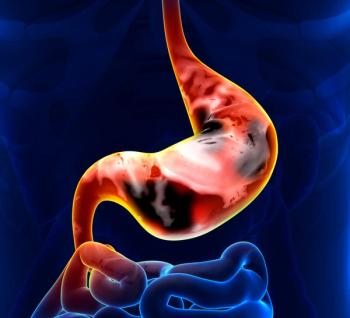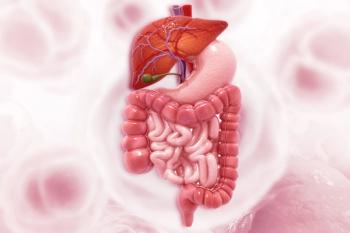
Oncology NEWS International
- Oncology NEWS International Vol 9 No 8
- Volume 9
- Issue 8
Number of Lymph Nodes Removed Determines Colon Cancer Survival: A Second Analysis of INT-0089
PHILADELPHIA-Nearly 45% of all cases of colon cancer have lymph node involvement. Surgical resection is the gold standard of treatment, with adjuvant chemotherapy used in an attempt to improve survival in patients with late-stage disease, but the outlook is often dismal.
PHILADELPHIANearly 45% of all cases of colon cancer have lymph node involvement. Surgical resection is the gold standard of treatment, with adjuvant chemotherapy used in an attempt to improve survival in patients with late-stage disease, but the outlook is often dismal.
A study reported at the recent ASCO meeting shows that survival for these patients may be directly related to the number of lymph nodes removed.
Researchers from Fox Chase Cancer Center, Cancer and Leukemia Group B, the Southwest Oncology Group, and the Eastern Cooperative Oncology Group took a second look at the NCI-sponsored INT-0089 trialan adjuvant chemotherapy trial of stage III and high-risk stage II patients on 5-FU-based regimens randomized among four treatment arms.
Reanalysis revealed that among node-negative patients, those who benefited most from surgical resection had more than 20 nodes removed. This resulted in an absolute improvement in survival of 14% at 5 years and 20% at 8 years.
For node-positive patients, the number of nodes removed also affected overall survival. A 23% improvement in survival at 5 years and 34% at 8 years in N1 patients is achieved if more than 40 nodes are removed. The absolute improvement at 5 years and 8 years for these patients is 20% and 28%, respectively, if more than 35 nodes are removed.
Colon cancer is marked by several well-known prognostic factorsdepth of penetration (T stage), tumor grade and type, the presence of vascular and lymphatic invasion, and lymph node involvement.
Of these factors, nodal involvement is probably most significant, said Thomas LeVoyer, MD, the lead author of the study from Fox Chase. Survival, he said, diminishes proportionally to the number of nodes involved.
A 1979 study conducted by Enker et al found a survival improvement for patients with stage III colon and rectal cancer that was related to an increase in the number of nodes removed.
Dr. LeVoyer and his colleagues used this 21-year-old study as the basis of their hypothesis. We were interested in evaluating the premise that removing more lymph nodes would equal more survival, Dr. LeVoyer said.
Dr. LeVoyer and his colleagues next turned their attention to a reevaluation of INT-0089. Because INT-0089 was the largest prospective trial on colon cancer with similar outcomes in treatment arms, we thought it was a good vehicle to evaluate survival as it relates to node removal, he said.
Data from all 3,557 patients in the trial were available for review, and 3,411 of these met all the criteria for the current analysis. Median follow-up was 79 months.
Multivariate analyses were performed on node-positive and node-negative groups separately to ascertain the effect of lymph node removal, Dr. LeVoyer said.
Looking at demographics, positive nodes were found in 1,515 men and 1,248 women; negative nodes in 334 men and 314 women. The median age for the node- positive group was 63.9, and for the negative group, it was 62.3.
The mean number of negative nodes removed was 13 (n = 648; range, 1 to 59). The mean number of positive nodes removed was 12 (n = 1,857; range, 1 to 80).
The majority of the positive nodes were stage T3, 11% were T1 and T2, and the negative nodes were evenly split between T3 and T4. Most were found either in the right side of the colon or in the sigmoid. However, there were 89 synchronous tumor sites found.
The endpoints of the analysis were overall survival, with death as an event, and cancer-specific survival, with death due to colon cancer as an event. The covariates looked at were sex, T stage, number of positive lymph nodes, total number of lymph nodes removed, tumor differentiation and type, and adjuvant chemotherapy regimens.
Age and the number of lymph nodes removed were the only significant variables affecting overall survival in node-negative patients (see Table). For cancer-specific survival, only the number of lymph nodes removed was predictive.
Node-negative patients who had 1 to 10 nodes removed had a median 5-year survival of 73%. If more than 20 nodes were removed, median 5-year survival improved to 87% (P < .0001).
Again, for the node-positive patients, the only significant covariate affecting overall survival and cancer-specific survival was the number of lymph nodes removed (Table). Those patients who had 1 to 10 lymph nodes removed had a median 5-year survival of 67%. With more than 40 nodes removed, survival jumped to 90%.
When you analyze the two groups based on the number of positive nodes within the specimen, those with 1 to 10 nodes removed had 1.75 positive nodes vs 2.03 in those with more than 40 nodes removed, Dr. LeVoyer said.
The number of lymph nodes removed seems to have an impact on survival in colon cancer, he concluded. This factor should be taken into account when conducting future adjuvant trials and analyzing data, he said.
Articles in this issue
over 25 years ago
Scientists Identify Gene Mutations in Multiple Myelomaover 25 years ago
Single-Agent Herceptin Active in Metastatic Breast Cancerover 25 years ago
Brain Metastases Respond to Paclitaxel, Carboplatin, and Brain RTNewsletter
Stay up to date on recent advances in the multidisciplinary approach to cancer.
















































































